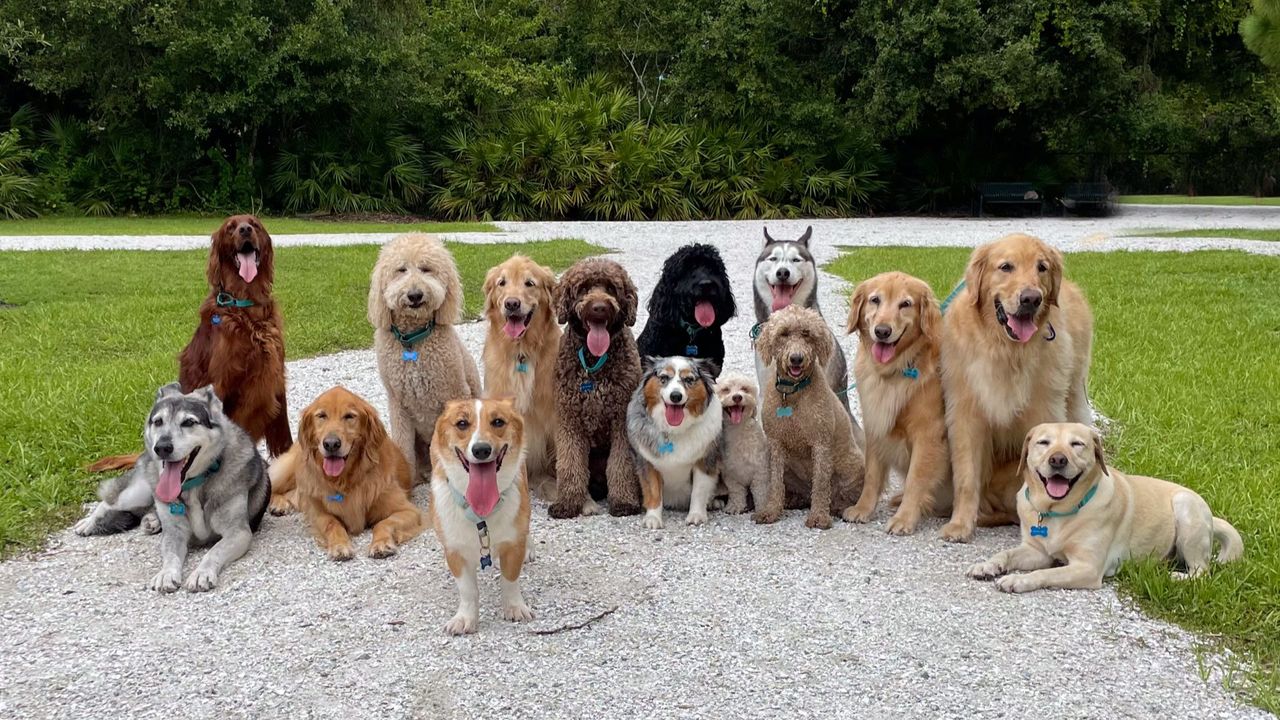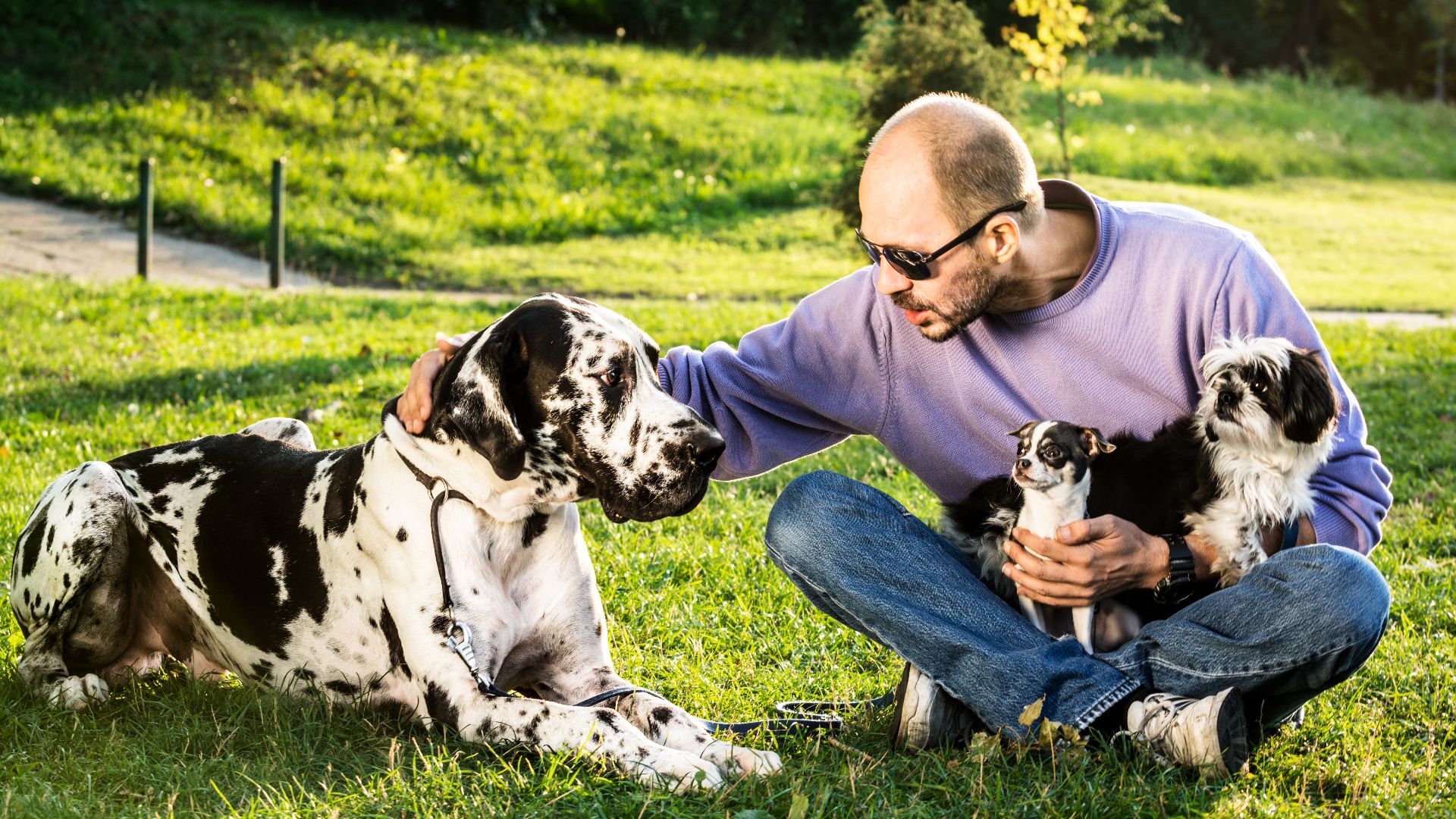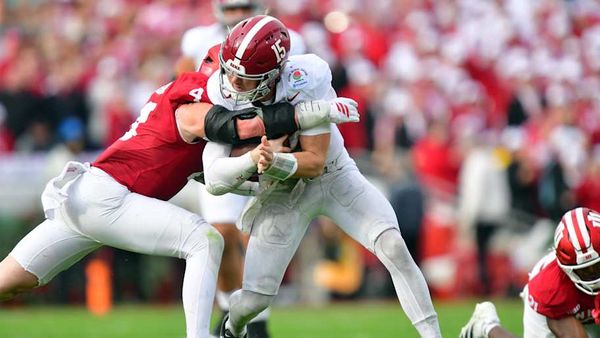
Whether you own a mix-breed dog or have adopted a mystery-breed shelter pupper, you may be searching for an answer to the question: “what breed is my dog?”
You’ve likely done a bit of guesswork. Maybe your dog’s long snoot is giving off greyhound energy, or perhaps their tough coat has you wondering if he has a wire-haired dog breed as part of his ancestry? Your dog’s quick learning might have you thinking they are descended from one of the smartest dog breeds, or their tendency to do their own thing might indicate their dog DNA features some of the hardest dogs to train.
Or, you could be considering going deeper into your dog’s heritage by investing in one of the best dog DNA tests. Whether you’re casually curious or have a burning desire to get to the bottom of your dog’s ancestry, there are so many ways you can explore it.
If you’ve ever found yourself asking, ‘What breed is my dog?’ but are unsure of the answer, then you’ve come to the right place. Vets Dr Rebecca MacMillan and Dr Catherine Barnette have helped us round up some of the best ways to try and figure it out.
How can you tell a dog is a purebred?

Purebred dogs can often be identified by their physical traits.
“Height, body conformation, coat length, color, markings, head shape, ears, and tail carriage can all be helpful in determining the breed of a purebred dog,” says Dr Catherine Barnette.
Dr Rebecca Macmillan adds: “Some breeds have obvious identifying features, such as the Dalmatian's spots, the broad head and flat face of the Bulldog, and the slender frame and long noses of sight hounds like greyhounds and whippets.”
Not only this, but behavioural characteristics come into it, too.
“Personality types can be strong for some dogs. such as the herding instinct of Border Collies, the high energy nature of the Visla, and the loyal, guarding tendencies of the Rottweiler.”
How to identify a mixed-breed dog

But how does going by looks work for mixed-breed dogs?
”For some mixed breeds, it may be possible to speculate their parentage by looks alone,” says Dr MacMillan. “This is especially true of crossbreeds, where one pedigree has mated with another pedigree. The features of each breed may still be quite apparent.
“An example of this would be poodle mixes, such as a poodle crossed with a Labrador – otherwise known as a Labradoodle,” she continues. “The poodle's curly or wavy coat is often very prominent in these crosses and usually acts as the main identifying feature.”
That said, physical traits are not always reliable when identifying mixed-breed dogs.
“You might expect mixed-breed dogs to have a combination of their parents’ traits,” continues Dr Barnette. “In reality, though, mixed-breed dogs may look like both of their parents, one of their parents, or neither of their parents.”
Dr MacMillan states that Labradoodles exemplify this with offspring variation in coat type.
“Some have tight poodle curls, others have looser waves, and some take more after their Labrador parent with straight hair. In fact, all of these tendencies can sometimes be observed in the same litter!”
With all this in mind, you may have trouble identifying a mixed-breed dog by sight.
“It can be hard to say with certainty what breed your adopted shelter dog is just from looks and personality alone,” concludes Dr MacMillan, “but it can be fun to have an educated guess!”
Other ways to identify dog breed
Behaviour

Examining your dog’s behavior can provide additional clues about your dog’s breed.
“Dogs that have been bred for herding, such as Border Collies and Australian Shepherds, may be seen “herding” small children and other pets in the home,” says Dr Barnette.
“Retrievers love a good game of fetch, while other hunting breeds, such as German Shorthaired Pointers, tend to chase anything that moves.”
However, it’s important to keep in mind that behavior is not an accurate predictor of breed.
“Socialisation, training, and past experiences will also have a huge impact on the personality and temperament of a dog,” advises Dr MacMillan. “This may have a bigger effect on how the dog behaves than their inherited traits.”
Apps
There’s an app for just about everything, and yes, that includes dog identification. Simply upload a photo or video of your dog, then let artificial intelligence do the hard work for you. The technology will match your dog up to other images in the database, giving you a rough idea of what breed your dog could be.
If you want to give it a go, you can try out some apps like Dog Scanner, Dog Breeds - Smart Identifier or Dog Identifier: AI Dog Scanner. They also give you details on the breed, including characteristics, history, and temperament.
“These apps are a lot of fun and can give you a good indication of a purebred dog’s breed,” says Dr Barnette. “However, use with caution: according to some user reviews, the apps aren’t always 100% accurate.”
Quizzes

Online quizzes, such as the one available at The Dog Key, also claim to help you identify your dog’s breed. These quizzes ask you questions about your dog’s physical characteristics, using your answers to narrow down your dog’s breed.
“Like apps, these quizzes are most likely to be helpful for purebred dogs,” says Dr Barnette. “They may also help you identify breeds that you hadn’t considered when questioning the genetics of your mixed-breed dog.”
Dog DNA testing: what’s it all about?

The best way to determine the genetic makeup of your mixed-breed dog is with the use of genetic testing. These tests examine your dog's DNA, looking for the presence of specific DNA sequences that are associated with certain breeds.
However, this won’t necessarily give you an accurate picture of the breeds that make up your mixed-breed dog.
“All domesticated dogs have nearly the same genetic material,” explains Dr Catherine Barnette. “A Great Dane’s DNA is nearly identical to a Yorkshire Terrier’s DNA. However, there are small genetic differences that have been identified and associated with specific breeds.”
It is these differences that form the basis for genetic testing.
“Companies that perform canine DNA testing have tested thousands of samples, from dogs of known breeds,” continues Dr Barnette. “When your dog’s DNA is analyzed, similarities to these identified, breed-specific DNA sequences can be used to identify your dog’s breed.”
How accurate are dog DNA tests?

No genetic test is perfect. Most providers of canine genetic testing claim to be more than 95% accurate, but this is met with skepticism by some vets.
“When canine genetic testing was first introduced in 2007, those of us working in practices that offered the service often saw results that made little to no sense,” explains Dr Catherine. “Large-breed patients who were supposedly 50% Chihuahua, stray dogs that supposedly contained extremely rare breeds (leading us to wonder who was releasing these rare, expensive breeds onto the streets to breed with strays!), and other results that seemed nearly impossible.
“Over time, however, these tests have become far more reliable. While we still encounter the rare surprising result, which we may regard with a bit of skepticism, most results nowadays ‘make sense’, given the dog’s appearance and the prevalence of breeds in our geographic area.”
While Dr Barnette feels that, over time, dog DNA tests have become far more reliable where breed identification is concerned, Dr MacMillan isn’t so certain.
“If owners want to work out their dog's heritage for interest or fun, then I think that's perfectly fine,” she says. “The quality of testing also varies considerably between companies, so results may not always be correct.
“Identifying pure breeds tends to be more accurate than the results produced for mixed breeds, but it all depends on the company's breed database and how complicated your dog's family tree is. It has been known for different companies to come up with different results for the same dog!”
Health testing
Screening for breed-related health problems life-enhancing application of DNA testing.
“This stops breeders from accidentally mating dogs with a genetic predisposition towards certain hereditary diseases or the most common illnesses dogs get, increasing the chances of healthy puppies,” says Dr MacMillan. “These particular tests are very accurate, and your vet will be able to advise you on how they work.”
There is no single best way to answer the question, “what breed is my dog?” Ultimately, how you find the answer to this question will depend on the purpose – do you want health information or is it just for fun? – and how accurately you want to understand your dog’s lineage.
Edited by Georgia Guerin.







